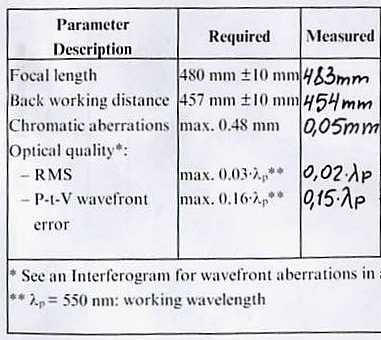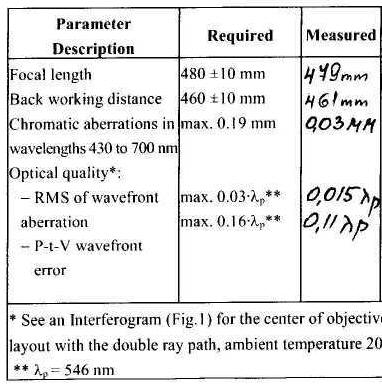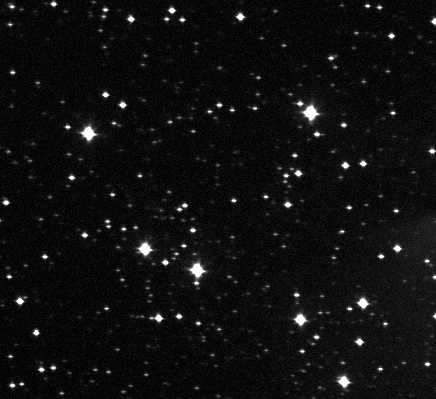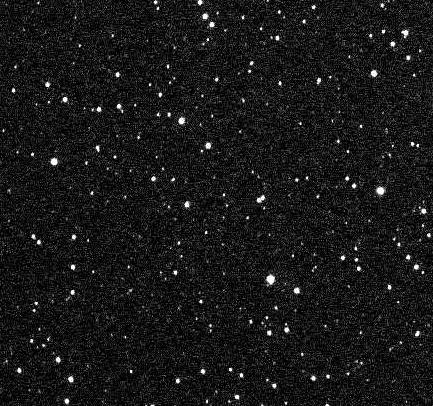Influences on image quality: Quality of the optics
Example: William APO 80mmF/6
-
The specified quality criteria concerning RMS und wavefront Error are (almost) fulfilled.
-
The interferogram is not very convincing: I would expect values different from the ones shown in the data sheet.
-
How would these data have looked if determined at lower temperatures?
-
The data sheet has been written in 2003, therefore the optics seem to belong to an early production run.


TMB - data sheet and interferogram of the first optics
-
The required specifications for RMS und wavefront Error are clearly fulfilled.
-
The interferogram looks nearly perfect. But, what about the comment "... for the center of the objective..." (Not shown here).
-
The data sheet was written at the end of 2004. Therefore this optics are from a newer production run which may have been improved compared to the older runs.


TMB - data sheet and interferogram of the new optics
Comparison of images derived from the first (left) and the new (right) optics
First TMB APO 80F/6-Optics

New TMB APO 80F/6-Optics

Data:
-
Telescope: Williams / TMB Fluorit APO 80mmF/6
-
Gemini 40 mount
-
Nauman filter wheel
-
Astronomik 2 LRGB filter set
-
Camera: Starlight SXV H9
Conclusions:
- These two examples clearly show, that good images can not be derived from poor optics.
- It can not be decided if the unsatisfying images derived from the first optics is due to restrained optics or due a worse optical quality of the lenses.
- I think, from the interferograms, it can be concluded, that the new lenses are significantly better - the dealer denoted that the differences are marginal and should not influence image quality. Well, there have been a lot of contrary discussions in some German online discussion groups (see this link) which convinced me not to get into such a discussion with the dealer. A clear statement about the quantity of quality differences of the old and new optics is hindered by the fact that, obviously, the measurement conditions for determining the interferograms were not identical.
- In addition, in several contributions to online discussion groups (www.astronomie.de) it has been mentioned that the first series of 80mm-APOs suffered from restrained optics when working at deeper temperatures.
- Due to the fact that images taken with the first optics at moderate temperatures also showed poor star images I conclude that mainly a poor quality of the first lenses caused the poor image quality..
- Last but not least it should be pointed out that the dealer Markus Ludes provided new optics within a short time and without any lengthy discussion. .